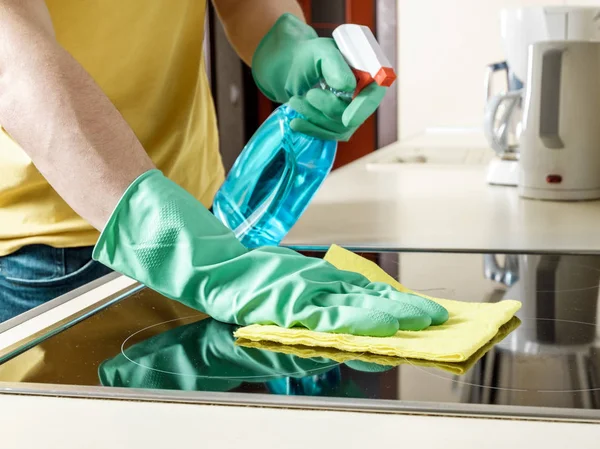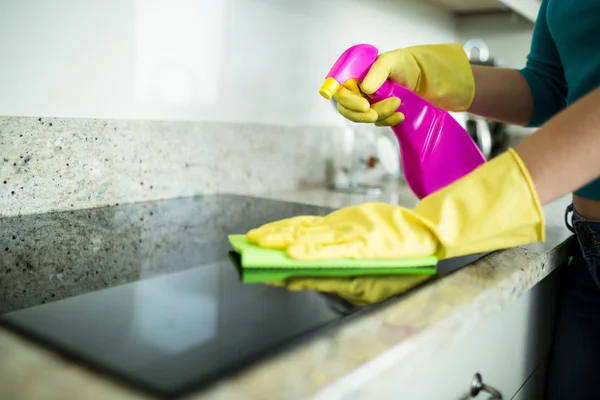Cleaning burnt milk off a glass stove top can be a challenging and frustrating task. However, it is essential to clean it properly to maintain the appearance and functionality of your stove top. The burnt milk residue not only looks unsightly but can also affect the heat distribution on the stove surface.

In this article, we will explore why it is important to clean burnt milk off a glass stove top, precautions and safety measures to take before cleaning, different methods for effective cleaning, tips and tricks to make the cleaning process easier, and preventive measures to avoid burnt milk incidents in the future. By following these guidelines, you can restore the cleanliness and efficiency of your glass stove top.
Precautions and Safety Measures before Cleaning
Before attempting to clean off burnt milk from a glass stove top, it is imperative to take necessary precautions and follow safety measures to ensure a smooth and safe cleaning process.
- To avoid any electrical accidents, make sure to turn off and unplug the stove.
- Allow the stove to cool down completely before starting the cleaning process.
- For your own safety, wear protective gloves to shield your hands from chemicals or heat.
- Begin by removing any loose debris or burnt food particles using a soft cloth or brush.
- Opt for a non-abrasive cleaner that is specifically designed for glass surfaces.
- Gently scrub the burnt milk using a soft sponge or cloth, utilizing a circular motion.
- Thoroughly rinse the area with clean water and then wipe it dry.
- Ensure proper ventilation in the area by either opening windows or turning on exhaust fans.
Methods for Cleaning Burnt Milk off Glass Stove Top
When it comes to cleaning burnt milk off a glass stove top, there are a few methods that can save the day. In this section, we’ll explore different techniques that will help you restore your stove top’s sparkle. From using baking soda and vinegar to the power of dish soap and water, and even specialized glass stovetop cleaners, we’ve got you covered.
Using Baking Soda and Vinegar
- Using Baking Soda and Vinegar, create a paste by mixing them together.
- Apply the paste, made with Baking Soda and Vinegar, to the burnt milk stains on the glass stove top.
- Let the paste, containing Baking Soda and Vinegar, sit for a few minutes to allow it to loosen the burnt milk.
- Gently scrub the area with a soft sponge or cloth, using the Baking Soda and Vinegar paste.
- Rinse the stove top with water and dry it with a clean cloth, after using the Baking Soda and Vinegar mixture.
Using Dish Soap and Water
- To clean glass stove top grates or burners, start by filling a sink or basin with warm water.
- Add a few drops of dish soap to the water and mix it well.
- Place the grates or burners in the soapy water to soak.
- Allow them to soak for at least 15 minutes to effectively loosen any burnt milk.
- Once soaked, gently scrub the grates or burners using a non-abrasive sponge or brush.
- Rinse the grates or burners thoroughly with clean water.
- Make sure to dry them completely before reassembling and placing them back on the stove top.

Using Commercial Glass Stove Top Cleaner
- Prepare the stove: Turn off the stove and allow it to cool before cleaning.
- Choose the right cleaner: Using a commercial glass stove top cleaner, select a commercial glass stovetop cleaner specifically designed for burnt-on residue.
- Apply the cleaner: Follow the instructions on the cleaner’s label and apply it directly to the burnt milk.
- Let it sit: Allow the cleaner to sit on the residue for the recommended amount of time.
- Scrub gently: Use a non-abrasive sponge or cloth to gently scrub the burnt milk, applying light pressure.
- Rinse and dry: Rinse the stovetop with warm water and wipe it dry with a clean cloth.
Tips and Tricks for Effective Cleaning
Dive into our collection of tips and tricks for a spotless kitchen. Discover the gentle scrubbing techniques that will restore your stove top’s shine. Learn the art of the soaking method to effortlessly lift stubborn stains. Say goodbye to abrasive materials and welcome alternative cleaning solutions. With these expert insights, you’ll be able to tackle even the toughest messes with ease.
Scrub Gently
- Scrub gently using a soft sponge or cloth to avoid scratching the glass surface.
- Scrub Gently and carefully in small circular motions to remove the burnt milk.
- Apply a cleaning solution or mixture to the affected area for added effectiveness, while continuing to scrub gently.
- Rinse the stove top with clean water after scrubbing gently.
Remember, gentle scrubbing will help prevent any damage to your glass stove top while effectively removing burnt milk stains.
Use Soaking Method
- Start by using the soaking method to remove any loose debris from the burnt area.
- Fill a basin or sink with warm, soapy water as part of the soaking method.
- Place the glass stove top in the soapy water and let it soak for at least 30 minutes, utilizing the soaking method.
- Next, gently scrub the burnt milk residue with a soft sponge or cloth, following the soaking method.
- Rinse the stove top thoroughly with clean water, continuing the soaking method.
- Finally, dry the glass stove top with a clean towel, still following the soaking method.
Avoid Abrasive Materials
Using abrasive materials can greatly harm the glass surface of your stove top. It is highly recommended to avoid using such substances. Instead, you should consider opting for more gentle cleaning methods to effectively eliminate burnt milk stains. Some of these alternative methods include:
- Utilizing a mixture of baking soda and vinegar
- Employing dish soap and water as a cleaning solution
- Utilizing a commercially available glass stovetop cleaner designed specifically for this purpose

Preventive Measures to Avoid Burnt Milk on Glass Stove Top
- To prevent burnt milk on a glass stove top, use a non-stick pan.
- For added protection, place a heat diffuser or a double-boiler between the stove and the pan when heating milk.
- Take preventive measures by monitoring the temperature carefully to avoid overheating the milk.
- Remember to stir frequently while heating to prevent scorching of the milk.
- In case the milk does burn, immediately remove the pan and allow it to cool before starting the cleaning process.
If you are looking for professional help in cleaning burnt milk off your glass stove top, or cleaning in general, do not hesitate to contact us at Ivy Cleans.
